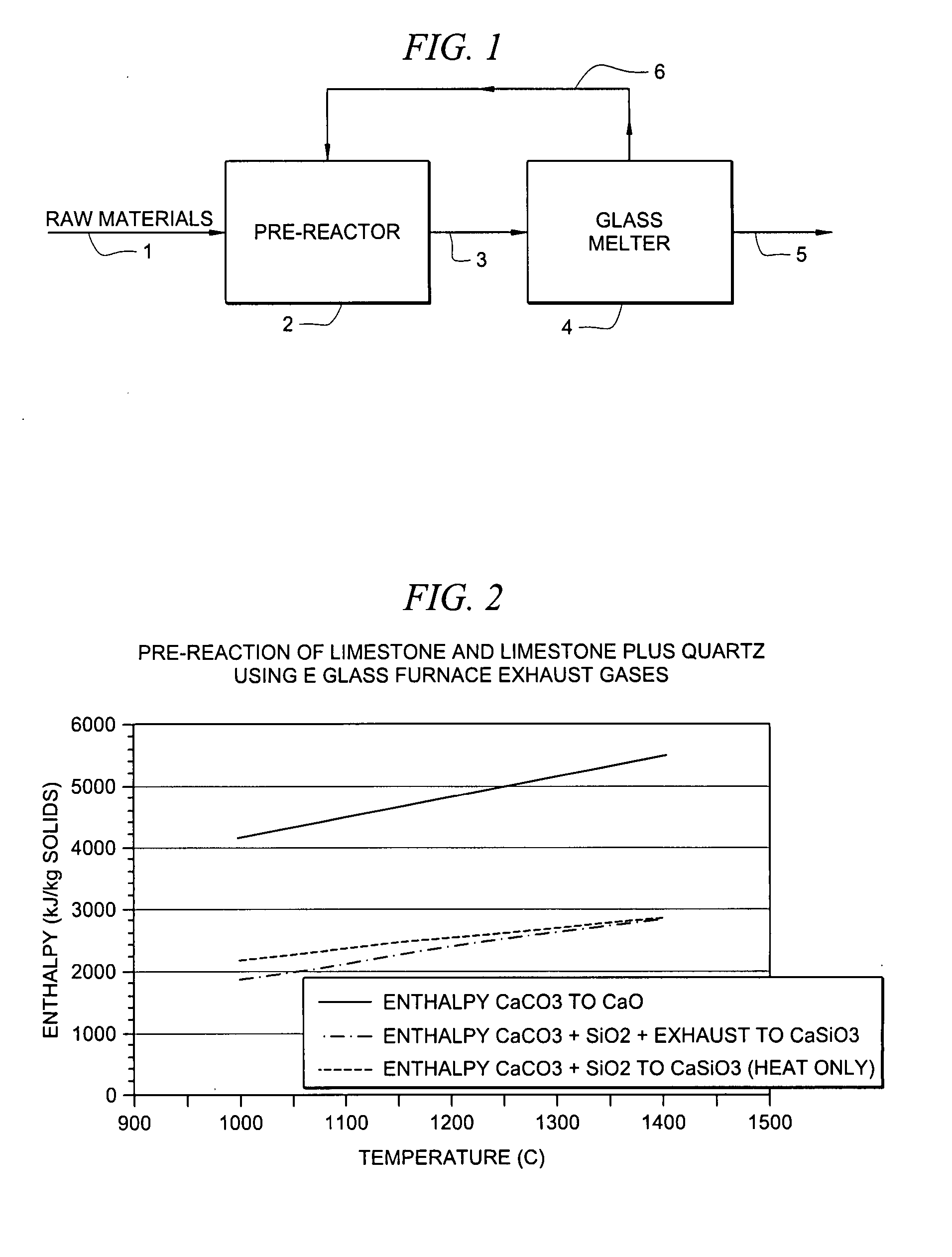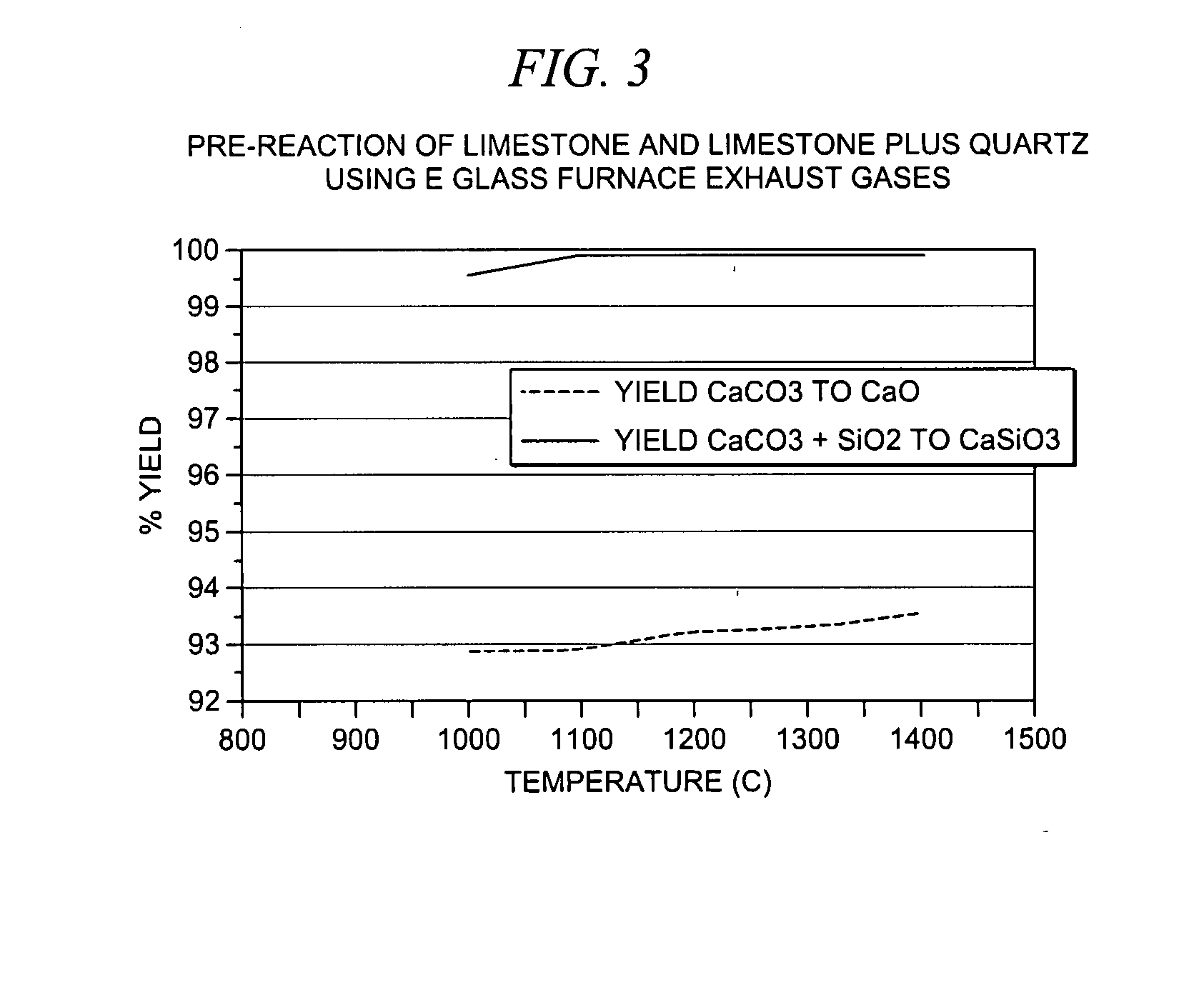Method for producing reactive raw material for manufacture of glass suitable fiberization
a technology of reactive raw materials and glass fibers, which is applied in the direction of glass blowing equipment, glass making equipment, manufacturing tools, etc., can solve the problems of loss of net efficiency and higher operating costs, and achieve the effects of short production time, high efficiency and high quality
- Summary
- Abstract
- Description
- Claims
- Application Information
AI Technical Summary
Benefits of technology
Problems solved by technology
Method used
Image
Examples
Embodiment Construction
[0017] The invention relates to an improvement in the process used to manufacture glass. More specifically, the invention relates to a method for producing a pre-reacted feedstock for use in the manufacture of glass fibers. The method allows for the production of high-quality glass using considerably less energy than is used with known methods.
[0018] Referring to FIG. 1, a simplified schematic is shown of one embodiment of the current invention. In contrast to known methods, in which raw materials are fed directly into a glass melting furnace, the current invention utilizes a pre-reaction process. In the pre-reaction process, the raw materials are combined with a high temperature reactive gas stream. For example, in the embodiment shown in FIG. 1, the raw materials 1 are combined with an exhaust stream 6 produced in the glass melting furnace 4 during glass melting. The raw materials may comprise limestone and quartz sand. The furnace exhaust stream shown in FIG. 1 typically compris...
PUM
| Property | Measurement | Unit |
|---|---|---|
| Temperature | aaaaa | aaaaa |
| Temperature | aaaaa | aaaaa |
| Fraction | aaaaa | aaaaa |
Abstract
Description
Claims
Application Information
 Login to View More
Login to View More - R&D
- Intellectual Property
- Life Sciences
- Materials
- Tech Scout
- Unparalleled Data Quality
- Higher Quality Content
- 60% Fewer Hallucinations
Browse by: Latest US Patents, China's latest patents, Technical Efficacy Thesaurus, Application Domain, Technology Topic, Popular Technical Reports.
© 2025 PatSnap. All rights reserved.Legal|Privacy policy|Modern Slavery Act Transparency Statement|Sitemap|About US| Contact US: help@patsnap.com



